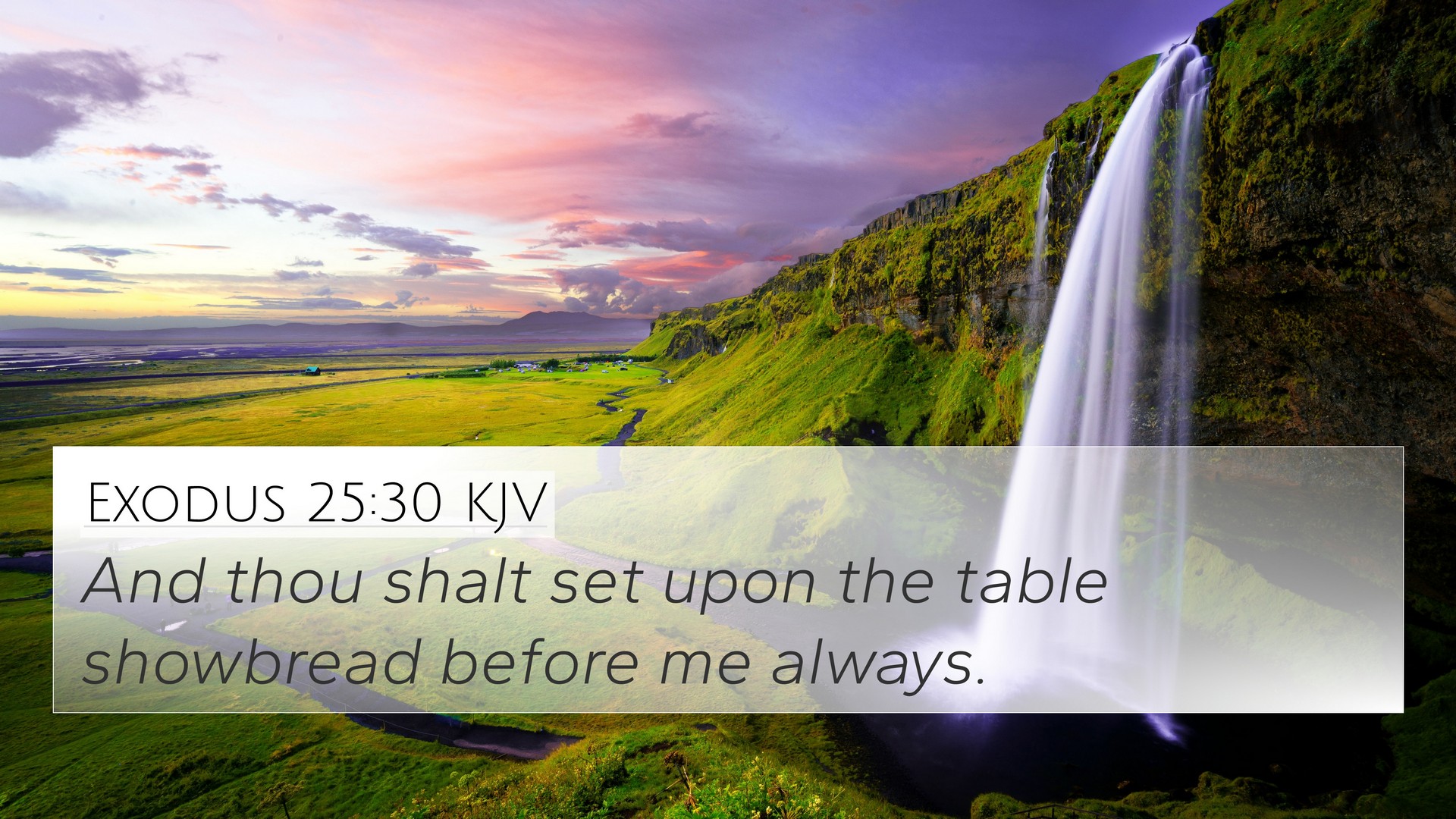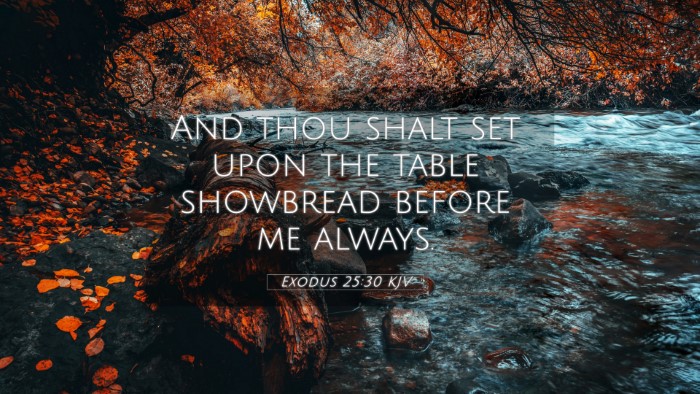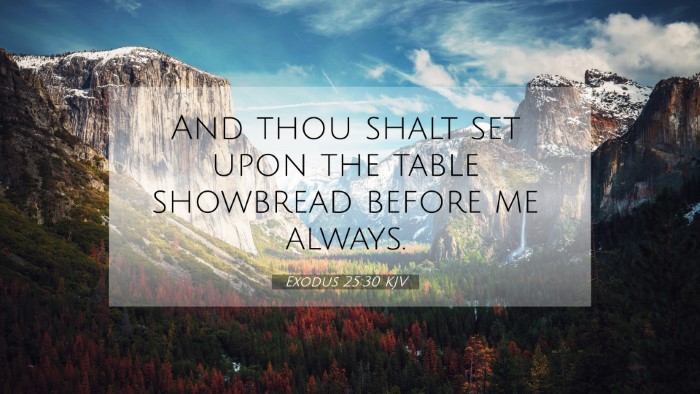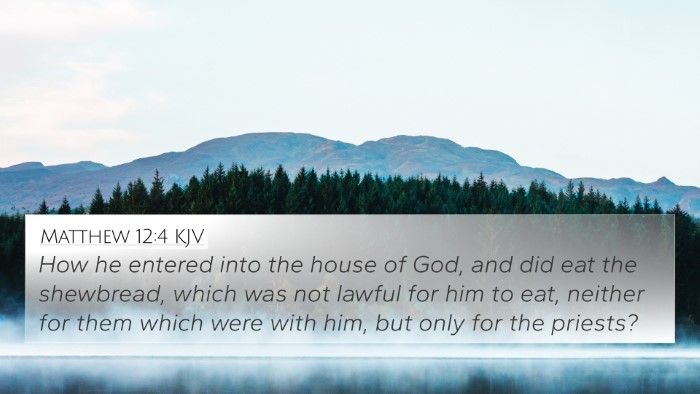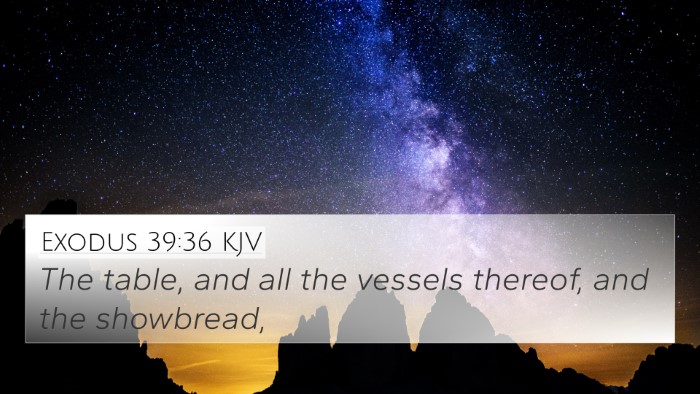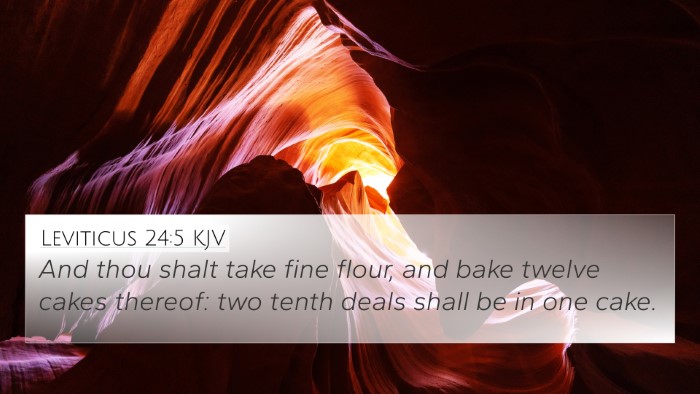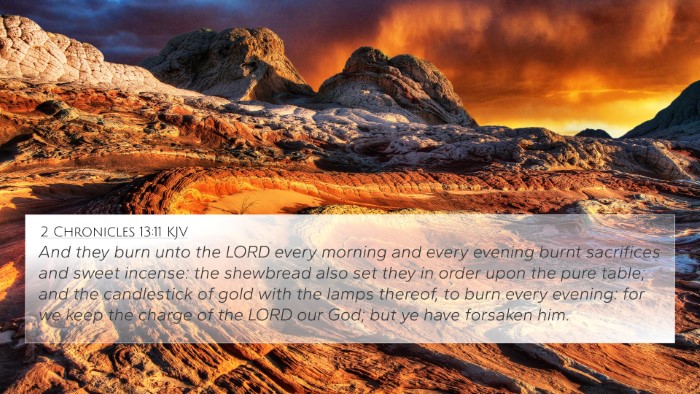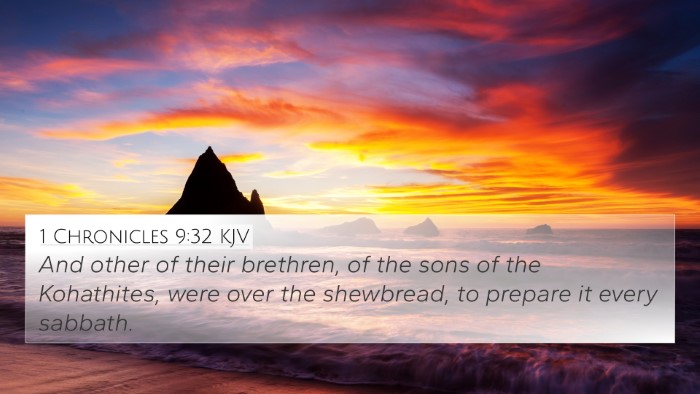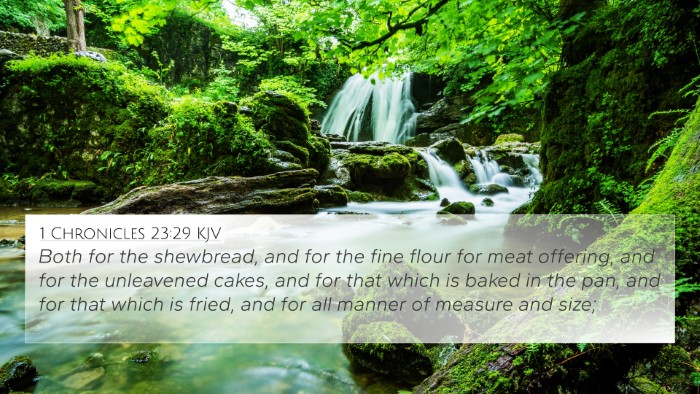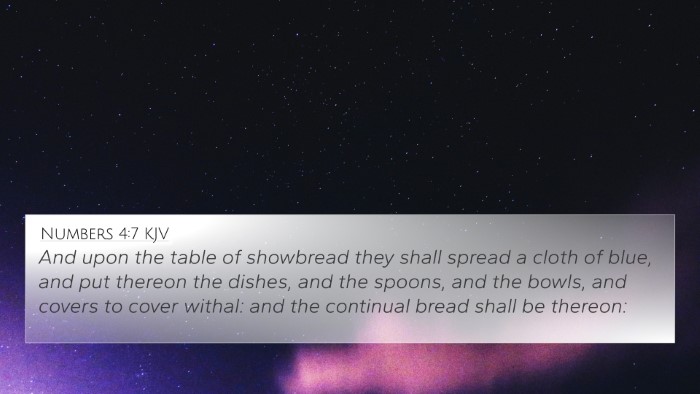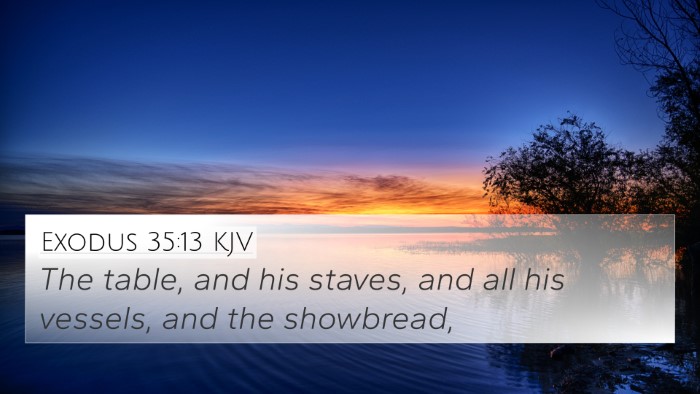Understanding Exodus 25:30
Exodus 25:30 states: "And thou shalt set upon the table shewbread before me always." This verse emphasizes the importance of the shewbread in the Tabernacle's furniture and its role as a symbol of God's provision and presence.
Summary of the Verse
In this passage, God commands Moses to place the shewbread on the table in the Tabernacle. This bread represents a continual offering to God, signifying His constant provision for His people. The shewbread, or "bread of the Presence," signifies God’s fellowship with Israel and the sustenance He provides.
Bible Verse Cross-References
- Leviticus 24:5-9: Details the preparation and placement of the shewbread.
- John 6:35: Jesus declares Himself the Bread of Life, connecting to the theme of sustenance.
- Matthew 12:3-4: Jesus references David eating the consecrated bread, highlighting its sacredness.
- Hebrews 9:2: Discusses the significance of the tabernacle's structure and the shewbread.
- Numbers 4:7: Mentions how the shewbread is tended by the Levites during the tabernacle's transport.
- 1 Chronicles 9:32: Expands on the role of Levites regarding the shewbread.
- Psalms 132:16: Refers to God's provision and His favor upon His people.
Thematic Bible Verse Connections
The theme of God's provision is prevalent throughout Scripture. The shewbread, placed in the Holy Place, becomes a representative of the divine sustenance provided by God, analogous to how God provided manna to the Israelites in the wilderness. This theme extends to the New Testament, where Jesus proclaims Himself as essential for spiritual life, reaffirming that He is the true bread that nourishes the soul.
Insights from Public Domain Commentaries
Matthew Henry: Henry identifies the shewbread as not merely bread but as a constant reminder of God’s presence among His people. He emphasizes that the table displays God’s willingness to maintain a relationship with His people through physical symbols.
Albert Barnes: Barnes highlights the shewbread's function within the Tabernacle, indicating its significance in reminding the people of God's continual provision and sustenance, paralleling His grace and mercy.
Adam Clarke: Clarke notes that the shewbread also serves an important relational purpose between God and Israel — it was an expression of fellowship, both divine and communal, underlining a covenant relationship.
Cross-Referencing Biblical Texts
Understanding Exodus 25:30 is enriched by exploring related scriptures. Each cross-reference offers insights into the broader narrative of God’s provision, the importance of sacred rituals, and how these practices were integral to worship in ancient Israel. This practice of cross-referencing allows for a comparative Bible verse analysis that deepens one’s understanding of God’s character and His relationship with humanity.
Conclusion
Exodus 25:30 serves as a vital scripture that illustrates the richness of God's provision and His desire to dwell among His people. Through the symbolic act of placing the shewbread before Him, we witness a deep theological truth about fellowship and divine sustenance, urging us to seek ongoing communion with God through understanding His Word and applying it through cross-references.
Tools for Bible Cross-Referencing
To explore these connections effectively, consider utilizing resources like a Bible concordance, Bible cross-reference guide, or comprehensive Bible reference resources. These tools will assist in identifying connections between Old and New Testament, thematic insights, and allow for a rich study of the Scriptures.
